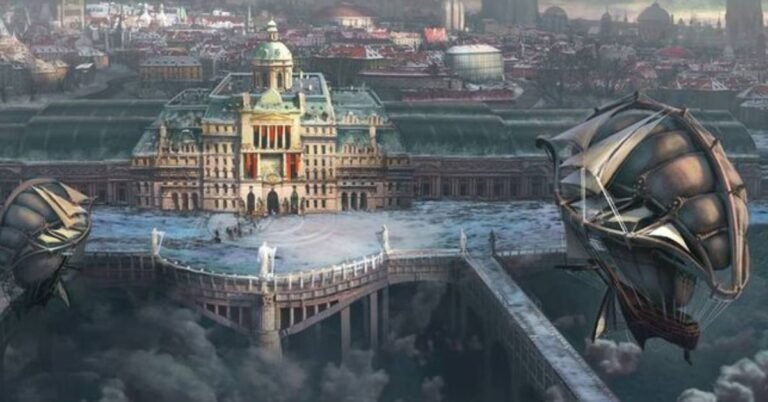Bart Springtime: Influence, Legacy, and Cultural Significance
Bart Springtime is a name that has captured the imagination of many across different spheres, whether it’s Bart Springtime is a name that has captured the imagination of many across different spheres, whether it’s in literature, pop culture, or as a symbolic figure.
While not universally known, Bart Springtime’s legacy and influence resonate deeply within specific communities, reflecting broader cultural, artistic, and thematic trends.
This article will explore Bart Springtime’s influence, enduring legacy, and cultural significance in various domains.
Who is Bart Springtime?
The name Bart Springtime often conjures up ideas of a figure associated with renewal, transformation, and perhaps a metaphor for cultural rebirth. While specific historical references may vary, Bart Springtime has come to represent a broader concept than a single individual in the popular imagination.
In certain artistic and literary circles, Bart Springtime is seen as a creative symbol—an individual or character embodying the spirit of regeneration, much like spring itself.
This embodiment has made Bart Springtime a compelling character in storytelling, often representing new beginnings, change, or even rebellion against stagnation.
The Origins of Bart Springtime: Fact or Fiction?
Bart Springtime’s origins are often clouded in mystery. Some scholars argue that Bart Springtime may have originated from folklore, myth, or even a fictional character created to represent the ideas of renewal and transformation. There are various interpretations:
- Folklore Origins: In some cases, Bart Springtime is believed to have originated from European folklore. The character may have been a metaphor for nature’s winter of death and rebirth, representing the return of spring and the end of winter’s harshness.
- Literary Creation: Others suggest that Bart Springtime could be the creation of a modern author or artist designed to embody particular themes, especially those revolving around personal or societal transformation.
Regardless of the precise origins, the name Bart Springtime has transcended its possible fictional roots to become a more profound symbol within specific cultural spaces.
Bart Springtime’s Influence on Popular Culture
While Bart Springtime may not be as recognizable as characters like Sherlock Holmes or Superman, his influence in popular culture is notable, especially in niche creative communities. Artists, writers, and filmmakers have used Bart Springtime as a symbol of hope, renewal, and change.
Some areas where Bart Springtime has left an imprint include:
- Literature: Several modern works of fiction have used characters with similar names or traits to represent renewal, hope, and defiance against oppressive societal structures. Bart Springtime is a metaphor for the rise of new ideas, often seen in dystopian or utopian narratives.
- Art and Music: The concept of Bart Springtime has also found its way into visual art and music. As a season, springtime often symbolizes rebirth, and Bart, as a character, channels this symbolism into works that emphasize new beginnings or cultural awakenings.
- Film and Theater: In some lesser-known indie movies and plays, characters modeled after Bart Springtime have been used to represent protagonists striving to improve their world. These characters often embody rebellion, growth, and transformation.
The Legacy of Bart Springtime: What He Represents
Bart Springtime’s legacy lies in what he represents rather than his actions or achievements. As a symbol, his name evokes certain emotions and ideals deeply connected to cultural movements and transformations. Some critical aspects of his legacy include:
- Renewal and Growth: Bart Springtime often represents life, death, and rebirth cycles. In literary and artistic depictions, his presence usually signals a period of transformation, personal or societal.
- Hope and Rebellion: As a figure tied to spring, Bart is often associated with hope after a long period of hardship or adversity. He can also symbolize rebellion, standing against stagnation or oppressive forces, bringing new ideas to the forefront.
- Cultural Regeneration: Many cultural movements, especially those emphasizing creativity and change, see Bart Springtime as a figure representing cultural regeneration. His name is often invoked in discussions about societal shifts or artistic renaissances.
Bart Springtime’s Cultural Significance: Why He Still Matters Today
Even if Bart Springtime is not a household name, his cultural significance remains relevant today. He embodies ideals that resonate with people in a rapidly changing world. Here are a few reasons why Bart Springtime still holds importance:
- Symbol of Transformation: In a world constantly in flux, Bart Springtime reminds us that change is necessary and inevitable. His symbolism encourages individuals and societies to embrace growth, even when challenging.
- Inspiration for Creativity: For many artists and creators, Bart Springtime symbolizes the endless possibilities of new beginnings. His association with springtime makes him an ideal muse for those looking to break away from old norms and explore new ideas.
- A metaphor for Social Change: In periods of societal upheaval, Bart Springtime represents the opportunity for renewal. His influence can be seen in movements that seek to dismantle outdated systems and foster innovation.
Bart Springtime in Modern Art and Media
Modern interpretations of Bart Springtime often draw from his symbolic nature. Whether in independent films, underground literature, or avant-garde art, Bart Springtime’s representation continues to evolve. Some recent works include:
- Film Adaptations: Several indie films have drawn on the Bart Springtime archetype, presenting characters that embody his spirit of rebellion and change.
- Visual Arts: Contemporary artists have incorporated Bart Springtime into their works, using his character to explore themes of nature, renewal, and human resilience.
- Digital Media: In the age of digital storytelling, Bart Springtime has even appeared as an avatar or character in interactive media, providing a new layer of engagement with his symbolism.
How Bart Springtime Reflects Society’s Desire for Change?
Bart Springtime is not just a character; he reflects society’s deeper desires for transformation and progress. In an age where societal norms are frequently questioned, Bart Springtime represents the potential for positive change.
His cultural significance is extreme in movements advocating for social justice, environmental sustainability, and creative freedom. Bart Springtime’s story is one of constant renewal, which aligns with humanity’s endless pursuit of improvement and innovation.
FAQs About Bart Springtime
1. Who is Bart Springtime?
Bart Springtime is a symbolic figure often associated with renewal, change, and cultural transformation themes. While his exact origins are unclear, he is considered a symbolic character representing growth and new beginnings.
2. What is Bart Springtime’s cultural significance?
Bart Springtime represents hope, rebellion, and societal regeneration. He symbolizes personal and cultural renewal and inspires creativity and change across various artistic fields.
3. How has Bart Springtime influenced popular culture?
Bart Springtime has influenced literature, art, music, and film, often embodying transformation, defiance, and the power of new ideas as a character.
4. Is Bart Springtime based on a natural person?
Bart Springtime is more of a symbolic or metaphorical figure than a natural person. His name has been used in various creative works to represent abstract concepts like renewal and growth.
5. What does Bart’s Springtime symbolize?
Bart Springtime symbolizes the cycle of death and rebirth, hope after adversity, and the power of transformation, much like spring itself.
6. Why is Bart Springtime relevant today?
Bart Springtime remains relevant because he represents change, progress, and creativity. His ideals inspire people to embrace transformation and innovation in a constantly evolving world.
Conclusion
Bart Springtime is more than just a character; he’s a cultural symbol representing growth, hope, and transformation. His influence can be seen in various art forms and discussions of societal change. As the world continues to evolve, Bart Springtime’s legacy reminds us that progress often requires embracing new beginnings.
His symbolic importance, especially in a time of global change, ensures that Bart Springtime will continue to inspire future generations.
Latest post!
- Sco Elcykel Styrebox Explained: Key Features and Benefits
- Tiathabrat: Redefining Streetwear with a Unique Edge
- Michael Schropp MPI: Leading the Evolution of Parallel Processing
- FairwayNomad: Elevate Your Golf Travel Game with This Unique Experience
- Kerîg: What You Need to Know
- Caden Crain: The Entrepreneur Redefining Modern Success












